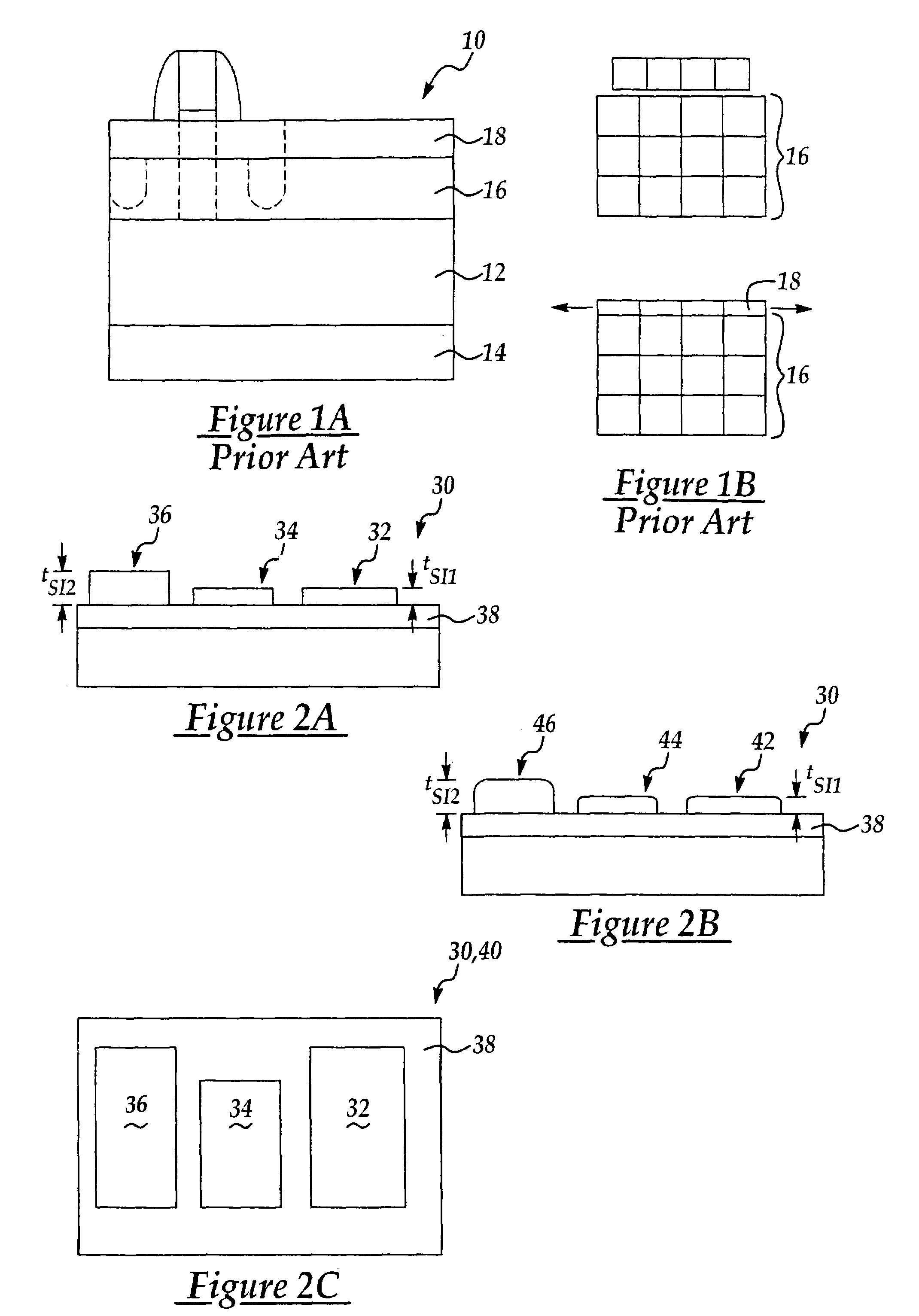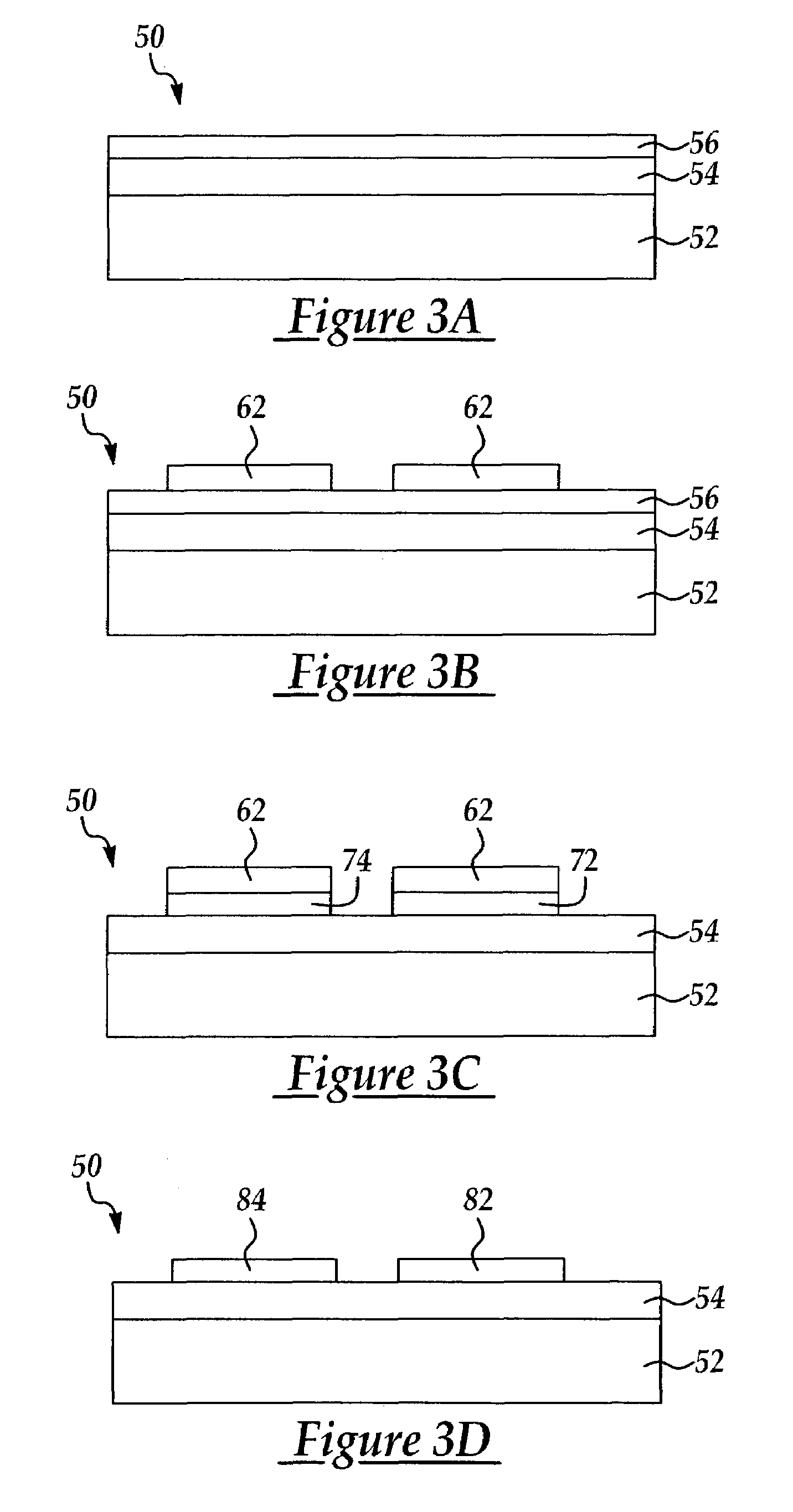Strained silicon-on-insulator transistors with mesa isolation
a technology of straining silicon and isolation, applied in the field of straining silicon-on-insulator transistors formed with mesa isolation, can solve the problems of long time, high cost, and significant challenges
- Summary
- Abstract
- Description
- Claims
- Application Information
AI Technical Summary
Benefits of technology
Problems solved by technology
Method used
Image
Examples
Embodiment Construction
[0028]In the present invention, a strained silicon on insulator structure with mesa isolation is disclosed.
[0029]The present invention avoids the shortcomings of conventional devices and processes by disclosing a structure and a process where a strained silicon layer does not experience device isolation formation processes that require high temperatures, and where problems of liner oxide formation is eliminated. One isolation scheme without the use of high temperatures is mesa isolation. Mesa isolation relies on the formation of islands of active regions where device or transistors reside. The islands of active regions overlie an insulating substrate. Transistors residing on separate islands are therefore isolated from each other. The formation of islands of active regions does not involve high temperature steps. This is important for the retention of strain in the strained silicon layer. However, mesa isolation cannot be used in the conventional strained silicon substrate shown in ...
PUM
 Login to View More
Login to View More Abstract
Description
Claims
Application Information
 Login to View More
Login to View More - R&D
- Intellectual Property
- Life Sciences
- Materials
- Tech Scout
- Unparalleled Data Quality
- Higher Quality Content
- 60% Fewer Hallucinations
Browse by: Latest US Patents, China's latest patents, Technical Efficacy Thesaurus, Application Domain, Technology Topic, Popular Technical Reports.
© 2025 PatSnap. All rights reserved.Legal|Privacy policy|Modern Slavery Act Transparency Statement|Sitemap|About US| Contact US: help@patsnap.com



